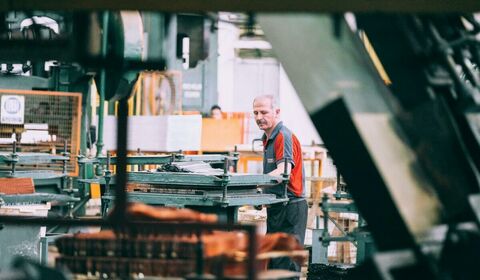How the increased minimum wage will affect your business costs
Business costs are on the rise? Have you factored in the rise in the National Living Wage? Act now to manage NMW increases and stay on top of these costs. With a proper financial plan, you can keep your business turning a profit.
Business costs are on the rise as we near the second quarter of 2022. Supply chain costs are increasing, energy prices are rising and labour costs are getting more expensive. These soaring costs mean higher expenditure and lower margins on your products and/or services. If left unchecked, that could mean a dip in your predicted profits for the quarter.
The good news is that by acting now to manage these increases you can stay on top of these costs. And with a proper financial plan, you can keep your business turning a profit.
A rise in the National Living Wage and Minimum Wage
A rise in the National Living Wage (NLW) and the National Minimum Wage (NMW) was announced in Autumn Budget 2021. This increase set the minimum wage back on track to reach the Government’s target of two-thirds of median earnings by 2024.
The size of your overall wage increase will depend on the age of your employees and whether they’re currently working as part of an apprenticeship scheme. However, the increase in your payroll costs is definitely something to factor into your financial planning for the year.
The new NLW and NMW rates from 1 April 2022 will be:

The impact of inflation
In addition to the rising cost of labour, inflation is forecast to put upward pressure on everyday items. UK inflation is forecast to hit 8% in April 2022, and that’s likely to increase your general running costs and the price of materials. Petrol prices are up, for instance, and Brexit and the resulting supply chain issues have driven up the cost of many imported products.
Time to review your pricing?
Is it time to put your prices up? Ideally, your business should increase costs by a tiny amount each year, rather than by a big jump every five years, for instance. Small increases help prevent price shocks for customers, and keep your business in line with the rest of the market.
Can you also cut costs?
If you don’t think increasing your prices is an option, or you still need to make more of a change, you may need to cut back your spending. We look at your business line by line, so we can help you identify areas where you might be able to trim the fat.
Talk to us about managing your business costs
It’s going to be a challenge to keep ahead of rising business costs in 2022. But with the right mindset, planning and forecasting, you can stay one step ahead of the curve.
Talk to us about your ongoing costs. We’ll review your business expenses to see where savings can be made and where you can push your margins to remain profitable.
Get in touchRelated Articles

5 major challenges for the manufacturing sector
Discover 5 key Industry 4.0 challenges for modern manufacturers and how to update your strategy to stay competitive.
Read On
UK unemployment: opportunities for your small business
UK unemployment is rising - explore 4 flexible hiring options to help your business seize new talent opportunities.
Read On
Start Up Loan Scheme: getting your business off the ground
Founding a new business but struggling to access funding? A government-backed Start Up Loan may be the answer to your business funding prayers.
Read On